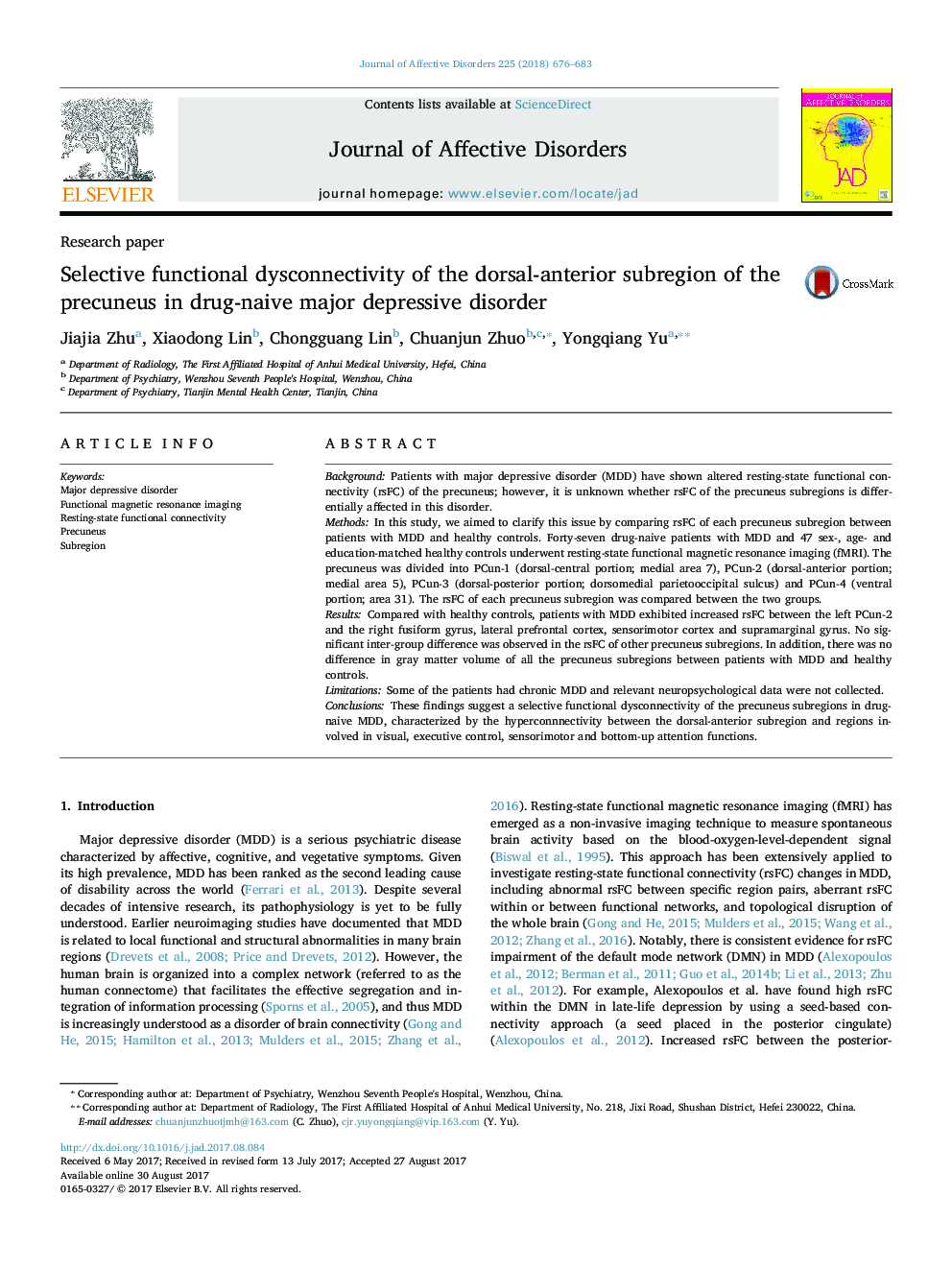| Article ID | Journal | Published Year | Pages | File Type |
|---|---|---|---|---|
| 5721776 | Journal of Affective Disorders | 2018 | 8 Pages |
â¢Drug-naive MDD exhibited a selective functional dysconnectivity of the precuneus subregions.â¢The dysconnectivity is characterized by the hyperconnnectivity between the dorsal-anterior subregion and other regions.â¢There was no difference in gray matter volume of all the precuneus subregions between MDD patients and healthy controls.
BackgroundPatients with major depressive disorder (MDD) have shown altered resting-state functional connectivity (rsFC) of the precuneus; however, it is unknown whether rsFC of the precuneus subregions is differentially affected in this disorder.MethodsIn this study, we aimed to clarify this issue by comparing rsFC of each precuneus subregion between patients with MDD and healthy controls. Forty-seven drug-naive patients with MDD and 47 sex-, age- and education-matched healthy controls underwent resting-state functional magnetic resonance imaging (fMRI). The precuneus was divided into PCun-1 (dorsal-central portion; medial area 7), PCun-2 (dorsal-anterior portion; medial area 5), PCun-3 (dorsal-posterior portion; dorsomedial parietooccipital sulcus) and PCun-4 (ventral portion; area 31). The rsFC of each precuneus subregion was compared between the two groups.ResultsCompared with healthy controls, patients with MDD exhibited increased rsFC between the left PCun-2 and the right fusiform gyrus, lateral prefrontal cortex, sensorimotor cortex and supramarginal gyrus. No significant inter-group difference was observed in the rsFC of other precuneus subregions. In addition, there was no difference in gray matter volume of all the precuneus subregions between patients with MDD and healthy controls.LimitationsSome of the patients had chronic MDD and relevant neuropsychological data were not collected.ConclusionsThese findings suggest a selective functional dysconnectivity of the precuneus subregions in drug-naive MDD, characterized by the hyperconnnectivity between the dorsal-anterior subregion and regions involved in visual, executive control, sensorimotor and bottom-up attention functions.
